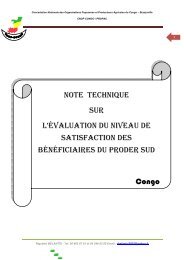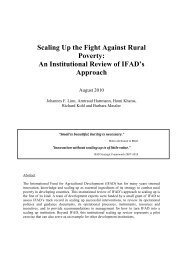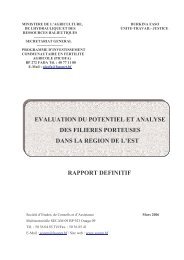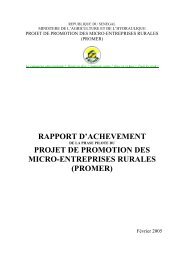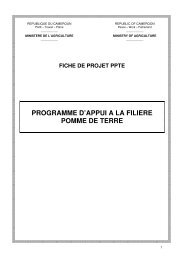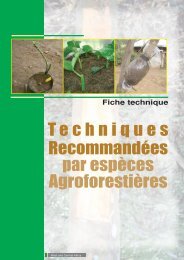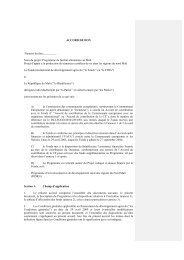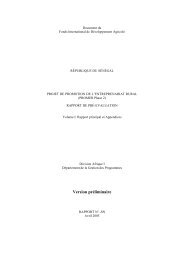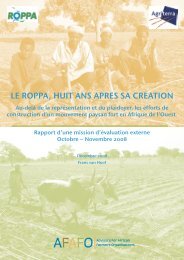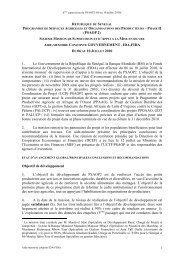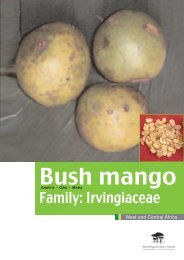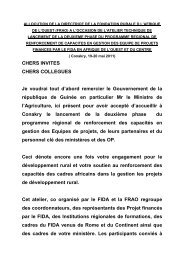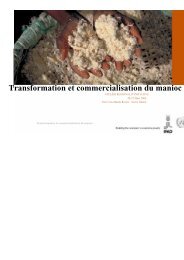CASSAVA OPPORTUNTIES IN NIGERIA - FAO.org
CASSAVA OPPORTUNTIES IN NIGERIA - FAO.org
CASSAVA OPPORTUNTIES IN NIGERIA - FAO.org
Create successful ePaper yourself
Turn your PDF publications into a flip-book with our unique Google optimized e-Paper software.
Thailand currently has 200 pellet factories with a<br />
total capacity of 10 million tonnes a year. At<br />
present the EU quota is 5 million tonnes a year,<br />
which means Thailand, is working at 50 percent<br />
capacity equivalent to three to four months a year<br />
and is quite ready to increase supply in response<br />
to international demand.<br />
4.3 NEW <strong>IN</strong>ITIATIVES<br />
Returning to the Nigerian domestic market for<br />
food and industrial goods and the farm modelling<br />
exercise, one of the most interesting results<br />
provided by the regional production models is the<br />
estimates of the amount of cassava that could be<br />
marketed as a result of the adoption of improved<br />
production practices and improved varieties.<br />
These results are highlighted in the following chart<br />
and figures.<br />
million tonnes<br />
160.00<br />
140.00<br />
120.00<br />
100.00<br />
80.00<br />
60.00<br />
40.00<br />
20.00<br />
0.00<br />
2ha Only Yield & 2ha 1ha Only Yield 15 Yield 20<br />
NC NE NW SE SS SW<br />
Figure 4-8 Marketable Cassava by Alternative<br />
Scenarios<br />
The model suggests that improvements in<br />
agronomic practices coupled with the use of<br />
improved yields can lead to large increases in the<br />
amount of cassava that could be marketed. This is<br />
consistent with often-repeated statements that the<br />
adoption of mosaic resistant cassava varieties<br />
could lead to large increases in cassava<br />
production.<br />
The increase in marketable cassava changes the<br />
relative importance of other marketable crops as<br />
illustrated in Maps 4-3 and 4-4.<br />
Map 4-3 is the base scenario of the model. It<br />
illustrates that the South East and North Central<br />
are the primary sources of marketable cassava.<br />
The South West is identified as the primary<br />
23<br />
source of marketed yams and the North West as<br />
the primary source of s<strong>org</strong>hum and maize.<br />
Map 4-3 Primary Marketed Crops Base Scenario<br />
The source and amount marketed changes for the<br />
scenario of improved agronomic practices and<br />
yields of 20 tonnes/ha is illustrated in Map 4-4.<br />
All regions except the North East are identified as<br />
potential marketers of cassava. The North Central<br />
is identified as the region with the greatest<br />
marketing potential while the North West, South<br />
East, South South and South West have nearly<br />
equal potential.



